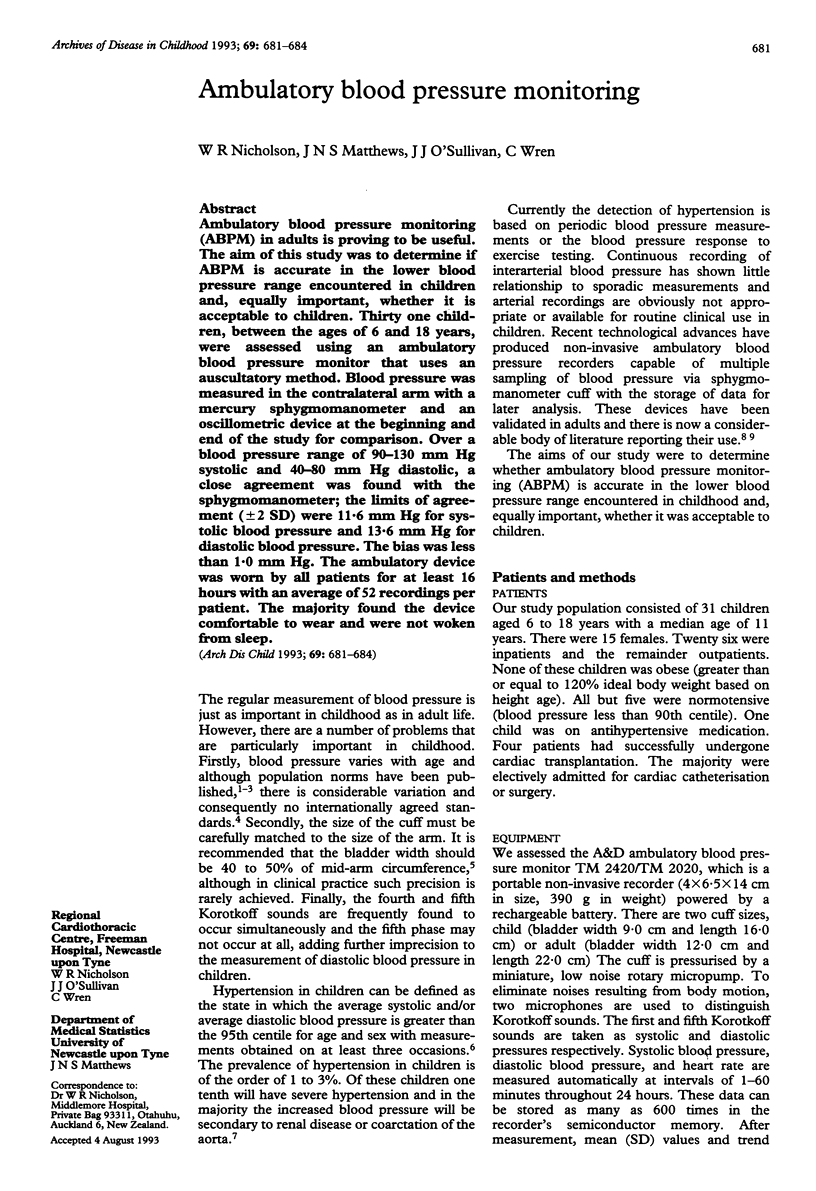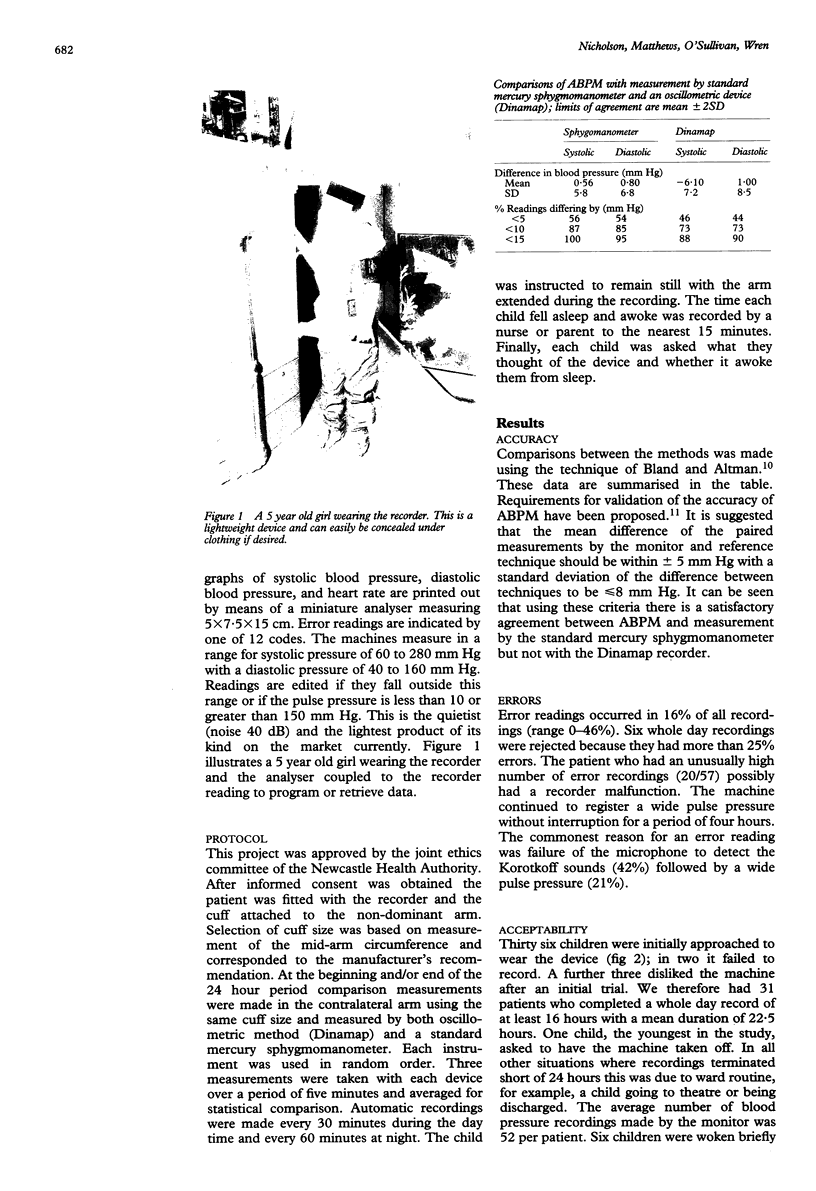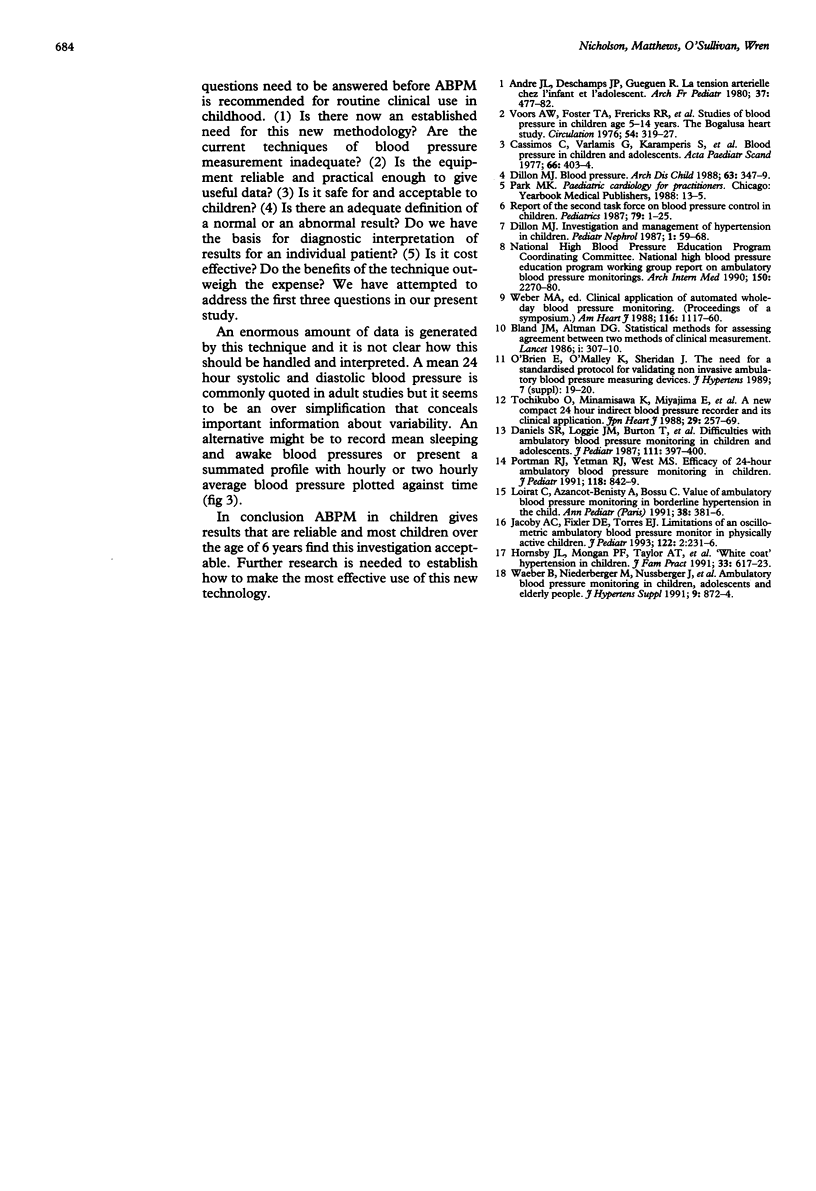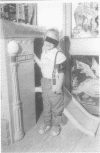Abstract
Ambulatory blood pressure monitoring (ABPM) in adults is proving to be useful. The aim of this study was to determine if ABPM is accurate in the lower blood pressure range encountered in children and, equally important, whether it is acceptable to children. Thirty one children, between the ages of 6 and 18 years, were assessed using an ambulatory blood pressure monitor that uses an auscultatory method. Blood pressure was measured in the contralateral arm with a mercury sphygmomanometer and an oscillometric device at the beginning and end of the study for comparison. Over a blood pressure range of 90-130 mm Hg systolic and 40-80 mm Hg diastolic, a close agreement was found with the sphygmomanometer; the limits of agreement (+/- 2 SD) were 11.6 mm Hg for systolic blood pressure and 13.6 mm Hg for diastolic blood pressure. The bias was less than 1.0 mm Hg. The ambulatory device was worn by all patients for at least 16 hours with an average of 52 recordings per patient. The majority found the device comfortable to wear and were not woken from sleep.
Full text
PDF



Images in this article
Selected References
These references are in PubMed. This may not be the complete list of references from this article.
- André J. L., Deschamps J. P., Gueguen R. La tension artérielle chez l'enfant et l'adolescent. Valeurs rapportées à l'âge et à la taille chez 17 067 sujets. Arch Fr Pediatr. 1980 Aug-Sep;37(7):477–482. [PubMed] [Google Scholar]
- Bland J. M., Altman D. G. Statistical methods for assessing agreement between two methods of clinical measurement. Lancet. 1986 Feb 8;1(8476):307–310. [PubMed] [Google Scholar]
- Cassimos C., Malaka-Zafiriu K., Tsiuris J., Danielides B. Erythrocyte glucose-6-phosphate dehydrogenase deficiency and neonatal jaundice. Acta Paediatr Scand. 1977 May;66(3):403–404. doi: 10.1111/j.1651-2227.1977.tb07916.x. [DOI] [PubMed] [Google Scholar]
- Daniels S. R., Loggie J. M., Burton T., Kaplan S. Difficulties with ambulatory blood pressure monitoring in children and adolescents. J Pediatr. 1987 Sep;111(3):397–400. doi: 10.1016/s0022-3476(87)80462-6. [DOI] [PubMed] [Google Scholar]
- Dillon M. J. Blood pressure. Arch Dis Child. 1988 Apr;63(4):347–349. doi: 10.1136/adc.63.4.347. [DOI] [PMC free article] [PubMed] [Google Scholar]
- Dillon M. J. Investigation and management of hypertension in children. A personal perspective. Pediatr Nephrol. 1987 Jan;1(1):59–68. doi: 10.1007/BF00866886. [DOI] [PubMed] [Google Scholar]
- Hornsby J. L., Mongan P. F., Taylor A. T., Treiber F. A. 'White coat' hypertension in children. J Fam Pract. 1991 Dec;33(6):617–623. [PubMed] [Google Scholar]
- Loirat C., Azancot-Benisty A., Bossu C., Durand I. Apport de la mesure de la pression artérielle ambulatoire dans l'hypertension artérielle limite de l'enfant. Ann Pediatr (Paris) 1991 Jun;38(6):381–386. [PubMed] [Google Scholar]
- Portman R. J., Yetman R. J., West M. S. Efficacy of 24-hour ambulatory blood pressure monitoring in children. J Pediatr. 1991 Jun;118(6):842–849. doi: 10.1016/s0022-3476(05)82193-6. [DOI] [PubMed] [Google Scholar]
- Tochikubo O., Minamisawa K., Miyajima E., Ishii M., Yanaga A., Yukinari Y. A new compact 24-hour indirect blood-pressure recorder and its clinical application. Jpn Heart J. 1988 May;29(3):257–269. doi: 10.1536/ihj.29.257. [DOI] [PubMed] [Google Scholar]
- Voors A. W., Foster T. A., Frerichs R. R., Webber L. S., Berenson G. S. Studies of blood pressures in children, ages 5-14 years, in a total biracial community: the Bogalusa Heart Study. Circulation. 1976 Aug;54(2):319–327. doi: 10.1161/01.cir.54.2.319. [DOI] [PubMed] [Google Scholar]



